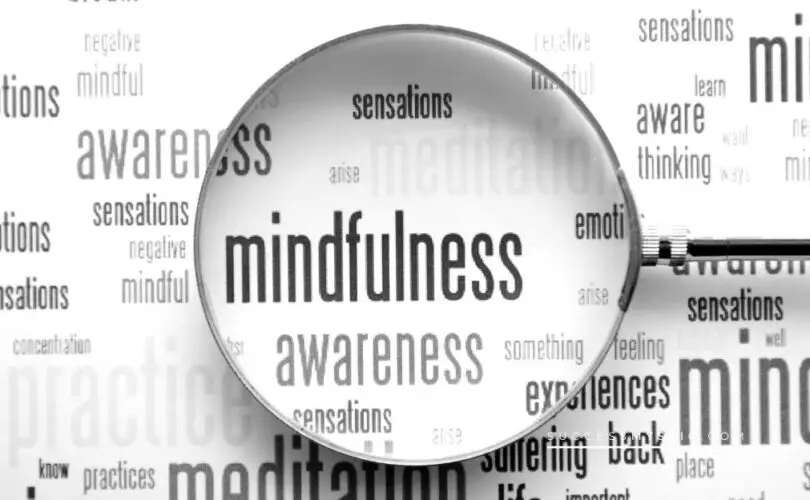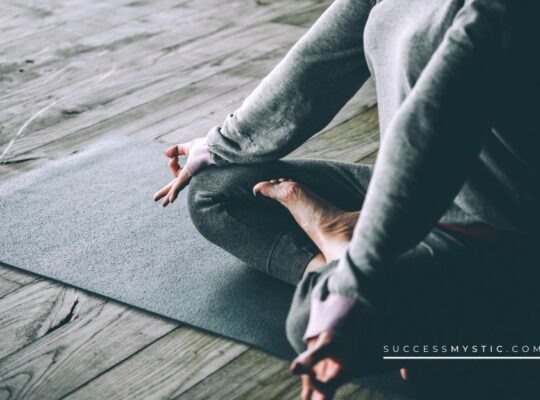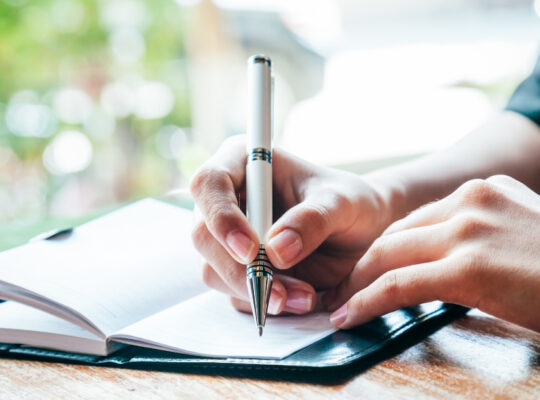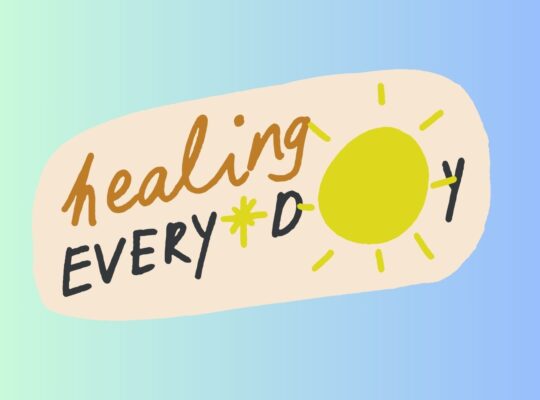In today’s hectic and overstimulated world, it can become very easy to lose touch with not only others but, more importantly, yourself. Becoming more mindful of your own life, thoughts, and feelings is essential for reconnecting with what is important in life.
Our guide will share with you just exactly what mindfulness is (and isn’t), why it is important to be mindful, how the various types of mindfulness differ, and how you can learn to be more mindful through simple, daily exercises. We’ll even help you determine how mindful you currently are in your life, which can help you know if you need to make some changes.
What is Mindfulness?
First, let’s examine what we really mean by mindfulness. This word is thrown around a lot these days. What is mindfulness, exactly? Most basically, mindfulness is paying attention. But it’s more than just focus. Being mindful means you are paying attention on purpose, you are focused on the present moment, and you suspend your judgment during this time.
The purpose of mindfulness is to allow your mind and your body to be focused in the same place at the same time. When you are engaged in mindful behavior, you are only focused on what you are doing at that moment, not on what has come before or will come after or on your distracting thoughts and emotions.
The aim of mindfulness practice is to train your brain to become more aware, intentional, and focused on the present. It really means learning to live in the moment. Among the numerous benefits to mindfulness, the most important is that you stop living your life on autopilot, going through the motions without even noticing what you are doing or why you are doing it.
Some people confuse mindfulness with meditation. These are not always the same thing. It is true that meditating can help you be more mindful, but being mindful is not always about meditation, and there are other reasons to meditate besides mindfulness.
While mindfulness can help you connect more with your spiritual needs, the practice is not religious in nature, nor does it need to involve religion of any kind. Some people confuse mindfulness with certain religious practices and beliefs, but again, these do not need to be connected.
You may be wondering, why is mindfulness necessary or important? We’ll next examine how being more mindful can improve your happiness and sense of self as well as how teaching mindfulness to the very young can actually change their brains as they age.
Why is Mindfulness Important?
As our lives become increasingly complex, and as the number and urgency of distractions continue to increase, it is more and more difficult for most of us to focus on our present situation. Many today struggle to maintain attention and focus for longer periods, as well. For those who are not attending to the present, life becomes one based on distraction, reaction, and stress.
You could consider the opposite of mindfulness to be mindlessness. When you are living mindlessly, you engage in activities without thought, your actions are usually done on autopilot, and life is not something you are enjoying but merely something you are doing.
When you learn to be more mindful, not only will you be more present in your life, but you will enjoy many other benefits that come along with rewiring your brain in this more mindful way. Mindfulness has been studied significantly over the past few decades, and our understanding of how it changes the brain continues to grow.
Practicing mindfulness can help you improve your focus, attention, and memory.
As you practice mindfulness exercises and activities, you are changing the neural pathways of your brain, which can enhance the ways many cognitive processes work. Memory and attention are just like any other skill, and you need to practice them to maintain them. Being more mindful is a way to practice these cognitive skills.
Mindfulness activities are also known to lower levels of stress, increase your ability to feel and exhibit compassion for yourself and others, and reduce negative emotions. In more recent studies, mindfulness activities were shown to be helpful in treating mental health issues such as anxiety, depression, and even PTSD.
Not only does mindfulness influence the brain and emotions, but it also has an impact on the body. Those who engage in mindfulness practices can boost their immune system, and regular practice has been shown to help the obese lose weight. In some cases, mindfulness has been shown to help those suffering from chronic pain, as well.
Because mindfulness helps you connect with yourself as well as others, it is helpful for finding balance in your life, improving your relationships with others, and enhancing your sense of self. As you learn to regulate your emotions, relax, and attend to what is important in your life, you will likely notice many other unintended but nonetheless significant benefits of this practice.
According to Psychology Today, “when mindfulness is being studied to treat a mental or physical health problem, there are clear methods of measuring improvement.”
The most thorough meta-analysis was used to measure the effect of mindfulness on various health problems (Meditation Programs for Psychological Stress and Well-being A Systematic Review and Meta-analysis; Goyal, et al)
In this review comparisons were made between mindfulness and other forms of treatment. The findings concluded that mindfulness helped to reduce stress and improve quality of life in study subjects. Moderate improvements were also seen for symptoms of anxiety, pain and depression.
Mindfulness in Education
Schools are increasingly embracing the importance of teaching mindfulness to children of all ages. Educators and researchers have seen the benefits of mindfulness in the classroom, including helping students with Attention-Deficit/Hyperactivity Disorder (ADHD). Children who learn to practice mindfulness exhibit higher levels of mental well-being, show fewer signs of stress, and are better able to remain calm and focused.
Kids who learn to be mindful can also enjoy mental health benefits such as decreased symptoms of anxiety and depression, as they are more in touch with their emotions and can better regulate their reactions. Children who practice mindfulness also have more positive relationships with peers, family members, teachers, and others in their lives.
Living In The Present
One of the key components of mindfulness is it forces you to focus on the present, versus keeping your mind stuck in the past or envisioning the future.
Staying in the present, in the here and the now is much less stressful than living in the past or wondering about the future. This is why programs like Alcoholics Anonymous and other 12 step programs urge followers to use slogans, such as, “Just For Today” and “One Day At A Time” because this mindset makes sobriety an easier pill to swallow, versus the overwhelm of thinking about being sober forever. The premise is that the future is irrelevant as it is not yet here, and the past is gone, so all we can control is today, and eliminate anxieties and worry about yesterday or tomorrow.
Living in today keeps you grounded and allows you to enjoy each moment because you are deliberately focused on it.
Consider this example. You spend your day thinking about what happened last week, last year or even 10 years ago. You worry about what you could have done differently. You dwell on bad memories. You keep replaying some scenario in your mind of regrets or how you could have done things differently.
During the experience described above, what is happening to the present moment? Are you enjoying it? Are you feeling it? Are you in it? No! Because your focus is on the past. Many people engage in this type exercise on a daily basis and while focusing on the past they lose the chance to experience and live the present moment.
The same occurs when the focus is on the future. You spend your time today worrying about, thinking about or envisioning what will happen tomorrow, next week or even next year. A defeating exercise that results in your missing out on the present moment, which in reality is all we have.
The past is gone forever.
The future is not yet here.
All we have is today, and each moment that is in it.
The Mindsets of Mindfulness
There are different types of mindfulness, and if you want to adopt these practices, it is first important to understand the mindset that is needed to be successful with this type of practice. Having the right attitude will ensure your mindful practice is truly helpful and beneficial. Let’s examine the tenets of mindfulness a little more closely to understand the necessary mindset, then we’ll discuss the various types of mindfulness practice so that you can determine which is best for you.
The first foundational mindset of mindfulness is becoming non-judgmental about yourself and others. When thoughts enter your mind during practice, you simply notice them and move on. There is no judgment about them, only observation. When learning mindfulness, you will also develop patience. Living in the present means you accept that things must happen in their own time.
As you practice mindfulness, you will also need to develop acceptance. Living in the moment means you accept that you cannot force things to occur or that others may not have the same needs as you. As you engage in more mindful practices, you will also learn to let go of those things and people in your life that impede your ability to live in the present.
Once you have understood these mindsets, it is time to engage in a regular mindfulness practice. Only when you work on being more mindful regularly will you enjoy all the benefits and learn to live in the moment. Even five minutes a day can build valuable skills and help you experience the many positive side effects of being more mindful.
If you want to be more mindful, you must embrace the notion of practice. Being mindful isn’t about an end result. It’s about developing a regular habit, a daily and ongoing practice. You don’t become mindful and then stop doing something. You learn to be more mindful by practicing regularly, by paying attention with intention more often, by recognizing when you are and when you are not being mindful.
So, if you are ready to start your mindfulness practice, let’s first examine just how mindful you are in your current life.
Your Turn: Exercise – How Mindful Are You Currently?
To begin your mindfulness journey, start by considering your current practices and attitudes.
For each of the following, consider and write down how often in the past seven days you have engaged in or considered each of the following.
- How often are you open to experiencing the present moment?
- How much are you aware of your intentions behind the actions you are taking?
- How often do you recognize when you are making life more difficult for yourself?
- How often do you pay attention to your body while engaged in daily activities?
- How often do you notice that you are not attended to your present reality?
- How patient are you with yourself and with others?
- How often do you judge yourself for mistakes you make or difficulties you are having?
- How often do you feel connected to your present experiences?
- How accepting are you of unpleasant or unwanted experiences?
- How often do you acknowledge appreciation for yourself and others?
- How often are you able to observe your emotions without getting lost in them?
- How often are you able to pause during difficult situations before reacting?
- How often do you experience moments of inner peace?
Carefully consider your answers to these questions. What do they tell you about your current capacity for mindfulness? What are your goals related to future practice in this area?
Mindfulness Meditation
There are plenty of benefit to meditation, as well as to mindfulness. Separately, they are both beneficial to your health and wellness, but combined… it’s opening doors and making waves in the wellness community. Let’s take a look at what it is, why you should try it, and how you can get started.
What Is Mindfulness Meditation
Quite simply, it’s a training practice for your mind. It requires you to focus on your thoughts, feelings, and the sensations you are experiencing at that moment. It’s literally being in the present and allowing yourself to experience exactly what it is that you’re experiencing.
You’re shutting out the chaos around you, even the chaos within you, to allow your find to enjoy some peace and quiet. It’s a refresh, like hitting a reset button. It tends to involve breathing, body awareness, mental awareness, mental imagery, as well as relaxing your body and muscles.
It’s by no means a new practice. In fact, it’s been practiced for thousands of years. Many ancient cultures followed the practice so, it’s difficult to know an exact origin.
However, instructions for the practice have been found in the texts of most of the major religions, from Judaism and Buddhism to Hinduism and Christianity. Buddhism offers something a little different, though, which is a deeper understanding of the practice.
Ultimately, it’s vital to the path of a Buddhist as they strive to create a nonjudgmental awareness of their feelings, surroundings, body, and mind.
For the religious who follow the practice, it was their way of taking a step back to connect with their spiritual selves. Today, there doesn’t need to be a spiritual component to it. You might just want to get in touch with your inner voice and truly check in to ensure you are honoring yourself in the way that you should.
Of course, if you want to go the spiritual route, you absolutely can. It’s all about honoring your wants, wishes, and needs. Now, though, it’s something that psychologists and other healthcare professionals often recommend to patients.
Mindfulness meditation is an excellent way to help manage the stress of the modern world, as well as certain illnesses.
There are a variety of techniques and styles in mindfulness meditation. However, they all share certain things in common. The focus is on awareness, it is essential to judge nothing, and it should cultivate peace within you.
Benefits Of Mindfulness Meditation
Religious practitioners have long extolled the benefits of mindfulness meditation for spiritual purposes, but is there more to it than that? Absolutely. There are physical benefits and emotional benefits as well. Many of these benefits are only being looked at now.
However, over the last decade, there has been a major shift in the acceptance of the practice and researchers have been keen to look into how it works. They want to know how it might affect the brain and what that means results wise. Here’s what we know so far.
- Stress – it’s incredibly effective for tackling stress, which is beneficial to anxiety, insomnia, depression, and obsessive thinking. Of course, stress has a physical impact as well so, managing it can provide you with physical improvements, too.
- Immune system – a low immune system leaves you open to a whole host of health issues. Mindfulness meditation can help you manage stress and improve your immune system, which will help you battle viruses. Studies have found that practicing mindfulness meditation increases the body’s immune response (Alterations in Brain and Immune Function Produced by Mindfulness Meditation; Davidson et al).
- Mental health – it isn’t just because it manages stress that it improves mental health. Research has shown that the practice fires electrical brain activity to trigger more positive emotions (Alterations in Brain and Immune Function Produced by Mindfulness Meditation; Davidson et al). People who are depressed tend to have more right side brain activity and practicing mindfulness meditation fires up the left side.
Your overall mental health can be improved through the practice. A study found that for those who had experienced previous depressive episodes, practicing mindfulness meditation was comparable to an anti-depressant maintenance dose when (The effect of mindfulness-based cognitive therapy for prevention of relapse in recurrent major depressive disorder: A systematic review and meta-analysis; Jacob Piet).
- Focus – not all the benefits are health-related, mindfulness meditation increases your ability to focus. That’s not something that goes away when you’re not practicing it, it reaches into the rest of your life.
- Age-Related Protection – telomerase is an enzyme that helps protect our DNA from stress and age-related damage. One study found that mindfulness meditation increases the presence of telomerase, which means that by practicing this art you can protect your cells from both stress and age damage (Intensive meditation training, immune cell telomerase activity, and psychological mediators; Tonya L. Jacobs, et al).
- It can also help you prevent illness, stay healthy while you recover from illness, boost your heart health, improve your sleep patterns, and help lose weight!
How To Practice Mindfulness Meditation
There is more than one way to practice mindfulness meditation and you should find one that suits your lifestyle. However, we want to provide you with a basic explanation of the process. From there, you can adapt it as you wish.
- First, you need a seat. This could be a bench in the park, a cushion or a chair. The key is that you find a spot that allows you to sit up straight and in a stable position.
- Pay attention to your legs – if you can cross them in front of you, that’s perfect. If you’ve chosen to sit on a chair, then ideally your feet should be touching the floor.
- Now, sit up straight, but don’t allow your body to become stiff. Your spine is naturally curved so allow it to be. Your shoulders and head should feel as though they are resting comfortably.
- Your upper arms should be parallel with your upper body. Allow your hands to rest at the tops of your legs. Your upper arms should be at your sides, this will ensure your hands are in the correct resting position. If you push your arms too far forward you will end up hunched over. If you push them too far back you will feel yourself stiffen. Think of your body as guitar strings and how they can be tuned too tightly or too loosely.
- You can now drop your chin to allow your gaze to fall downward. Let your eyelids droop, you can close them if you wish, but it isn’t necessary.
- Now, just relax and be present. Your attention should be on the sensations your body is experiencing or on your breath.
- Follow your breath as you inhale and exhale. Allow yourself to experience the sensation of the air passing through your mouth and nose, notice how your chest and stomach rise and fall.
- It’s completely normal for your focus to shift away from your breath and for your mind to wander. Just return it right back to your breath. This is something that will happen frequently as you get started, but the more practice you have the better you will become at keeping your attention on your breath. Some people choose a focal point to look at or a word to repeat that helps them focus. That’s up to you.
- You can slowly open your eyes or lift your gaze when you are ready to complete the practice. Before you get up, take a moment to notice how you feel, how your body feels, what thoughts you are experiencing, and what sounds are around you.
How To Practice Mindfulness In Your Daily Activities
Developing a regular practice of mindfulness means finding ways to be more mindful in your daily life. Mindfulness isn’t something you do once and stop; it is something you practice in many different aspects of your life.
Mind Body Exercises
For those who engage in yoga or meditation practices, mindfulness is probably already familiar to you. Practicing mindfulness during yin yoga, meditation, Qigong and Tai Chi are forms of gentle exercise is a natural fit. But you can also turn other types of daily habits into opportunities to be more mindful. Here are a few examples.
Basic Mindful Breathing
The most basic mindfulness practice you can learn is focused breathing. Spending just a few minutes engaged in intentional focus on your breathing helps you focus on your present reality, provides you with a focal point that helps your concentration, and allows you to practice being mindful just about anywhere.
Sit comfortably and close your eyes. For just two minutes, focus solely on your intake and exhalation of breath. Notice how your body feels as air enters your lungs and leaves your body. As thoughts enter your mind, notice them and then return your attention back to your breathing. Continue this focus for several minutes.
The most important aspect of being mindful is that, as thoughts come into your mind while you are practicing, you realize and accept that this is normal. The key aspect is that you do not shift your attention to those thoughts, but instead you simply notice them and refocus on your mindful practice. Do not judge or criticize yourself for having these thoughts. It’s perfectly natural. Acknowledge them, let them drift through, and return to your intentional practice.
You are training your mind to remain focused on the present. Thoughts and worries about the past or future take you away from your current actions. When you first begin practicing, you will need to refocus many times as you are learning to maintain a single focus and not allow your mind to wander. But, over time, you will notice that this is easier to maintain.
Be Mindful While Driving
Instead of using your daily commute to think about other things (or nothing at all), be mindful of each turn, each decision you make while driving. Pay attention to your activity to notice what you are doing and how it affects you.
While waiting in line or for your next appointment, engage in a two-minute mindful breathing exercise. While standing or sitting, focus solely on your intake and exhale or breath, noting how each breath feels as it enters and exits your body.
While in the shower, pay careful attention to each element of this regular routine. Focus on the sensations of sound, touch, and smell that engulf you as you cleanse your body and prepare for your day.
Chores Are Repetitive Tasks
Chores are repetitive tasks we do without thinking. Instead, turn these tasks into mindfulness exercises. Focus your attention on how you complete each aspect of the job, whether it is washing dishes, organizing your desk, or folding laundry. Stay attuned to the chore throughout the entire process, allowing other thoughts to pass through your mind without attending to them.
Bed Time
As you lay in bed at the start and end of each day, become mindful of your physical self. Start each day with a positive focus on your day’s intentions and positive affirmations. End each day with gratitude for your blessings and relaxing thoughts to calm your body.
Walking
As you sit or walk through nature, mindfully focus on the sounds you hear. Notice the noises of animals, the sounds of wind and water, the voices surrounding you. Focus only on how these sounds enter your mind, then pass through.
Eating
While eating, focus on how each bite tastes as it enters your mouth and continues down your throat. Be mindful throughout an entire meal, focusing solely on eating each bite and enjoying all the components of your meal.
Cooking
Develop mindfulness while cooking. Enjoy attending to the textures, smells, and colors of your ingredients as you prepare them. Focus on how foods change as you cook your meal.
Any Mundane Activity
Create opportunity to be more mindful in your mundane activities throughout your day. Instead of engaging in tasks mindlessly, choose to focus on what you are doing more fully and learn to live in the moment.
One Step At A Time
There are many ways to be more mindful throughout your day. Attend to one task at a time. Avoid multitasking and distractions that keep diverting your attention. Customize your mindful practice to meet your needs and fit into your lifestyle.
Tips for Building a Mindful Practice
Practicing mindfulness can happen in just about any setting. You need to find the right experiences that work for you. No matter when or where you work on being more mindful, here are some simple guidelines to keep in mind.
1. Be gentle with yourself. As thoughts and emotions creep in while you are focusing on your present situation, be compassionate towards yourself. Respond to your feelings and sensations with gentleness, not criticism.
2. Participate fully for as long as you are able. For the time you can, bring your full attention to the present moment. When you first begin your practice, you may only be able to remain focused for short amounts of time. This will grow as you continue to practice.
3. Reflect on your practice often. After a mindfulness exercise, reflect on your experience. Observe how thoughts crept in and how you were able to notice them and return to your present experience. Reflect upon the emotions and physical sensations that occur during your practice as well. There is no need to judge or act upon these observations. Just noting them is enough.
4. Remember that emotions are not facts. When you feel an emotion, you may want to believe that it is the truth, but it is, in fact, simply an interpretation of reality in your mind. Focus on observations, not feelings. Instead of telling yourself, “I will always be alone,” instead recognize the truth of “I am feeling lonely right now.” These are different and can be dealt with in different ways.
Other Reminders for Becoming More Mindful
When trying to build a more mindful practice into your daily routine, start small and build upon daily successes. Don’t start with a goal of 30 minutes per day. More realistically, you should start with a two-minute activity. As you are able to focus more and become more adept and maintain attention, you can increase your time.
You don’t need to add new activities to practice mindfulness. Just focus on becoming more aware of the things you already do. Take regular activities you already do a lot and turn them into opportunities to practice being more mindful. Do them with greater intention and with an aim to be present in the moment while doing them.
It is impossible to be completely mindful 100 percent of the time. Our brains don’t have the capacity to remain laser-focused all day long. That’s not the goal. Instead, focus on how becoming more attentive in the present can help you be more aware of yourself and others. Notice how you are better able to suspend judgment and just experience life.
Often, one of the best ways to be more present is to unplug. Turning off the distractions in your life, such as the TV, computer, and your phone is a wonderful start to being more mindful. Dedicate some time each day to living without technology to see how it affects your ability to attend and focus on the present.
Certain types of music can be excellent companions for mindfulness and meditation practices. Alpha-wave music is created to stimulate the alpha waves of your brain, which help you relax and maintain focus. If you are interested, do an internet search for alpha-wave music to find selections. Listening before bedtime is an excellent strategy to promote better sleep and listening while meditating can also be helpful.
Focusing on something can be very beneficial while practicing mindfulness. Pick simple objects, such as your own breathing or a candle flame. Or focus on just one of your senses. Don’t become bogged down in what you are focusing on, merely that you are, in fact, concentrating on just one thing.
There are many helpful apps for your phone that can guide your mediation or mindfulness exercises, if you need help. There are also many helpful online guides and resources dedicated to mindfulness. If you’re not sure how to get started, if you need some fresh ideas, or you just want to learn more, a simple online search will yield many helpful resources with more in-depth information.
While developing mindfulness practices, be patient with yourself. It takes time and practice to change how your brain works. Don’t rush it. If you practice regularly, you will start to notice differences. But don’t give up because you don’t see a significant change right away.
Final Thoughts
Mindfulness practice has been shown to enhance mental as well as physical health, and it can be used to help treat many disorders, including anxiety, depression, chronic pain, and even PTSD. Being able to attend to your current reality helps you reduce stress and find a more peaceful existence.
Learning to be more mindful can help you in many important ways in your life. From increasing your ability to focus and remember to enhancing your mental health and relationships, mindfulness practice can benefit everyone.
If you are interested in learning to be more mindful, you can engage in short activities throughout your day that teach you to attend to what you are doing and stop focusing so much on all of the other thoughts that drift through your mind. Just a few minutes several times per day can train the neural pathways of your mind to maintain focus and attention.
Learning to be more mindful is something you can incorporate in your daily activities, such as while driving or cooking or when you are cleaning or walking. You can practice mindful breathing in many places and times, and there are simple changes you can make to your life to improve your ability to be more mindful.
Mindfulness is a natural part of practices such as meditation and yoga, as these activities are based on sustained focus and purposeful breathing and movement. Those who regularly meditate, or practice yoga are able to be more mindful due to their participation in these activities.
The benefits of mindfulness extend from stressed-out adults to the elderly to young children. Building mindful practices into your family time is an excellent way for everyone in your home to enjoy the physical and psychological benefits of being more mindful. Start today with the mindfulness activity of your choice.







